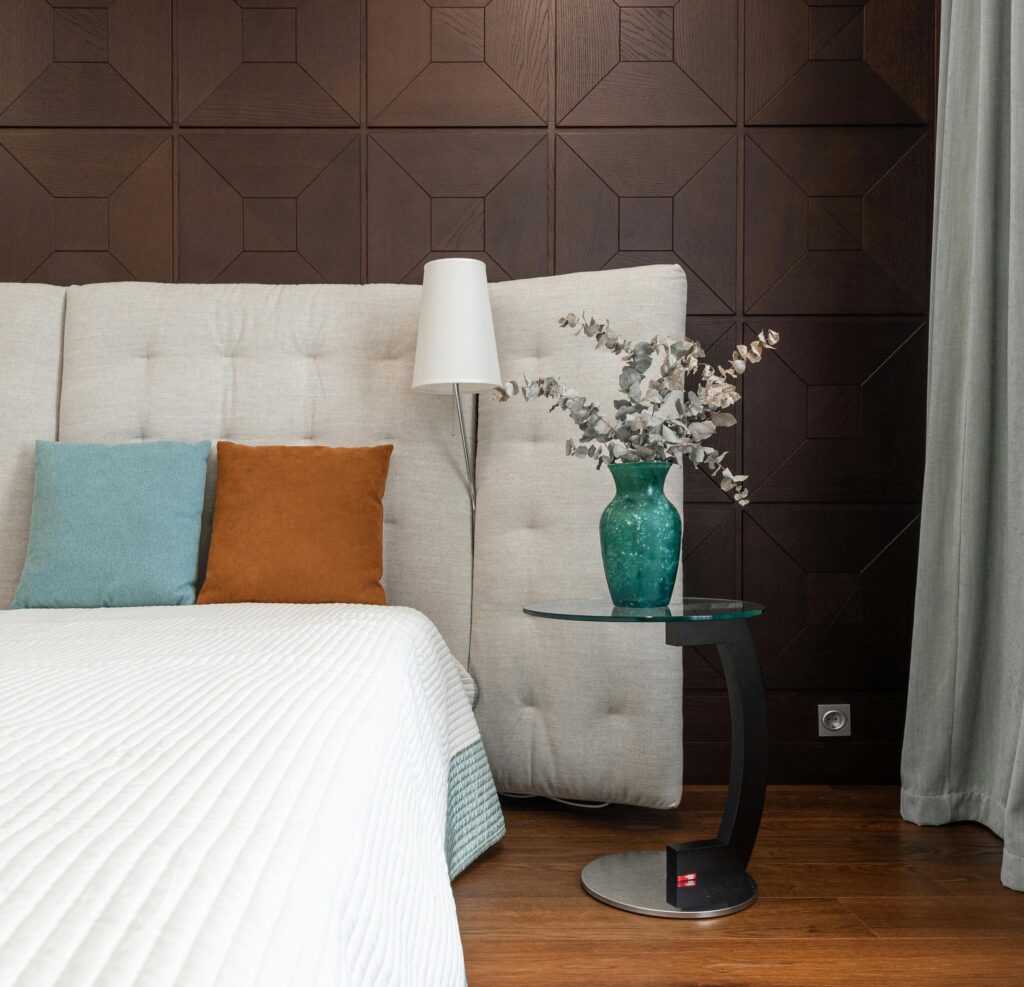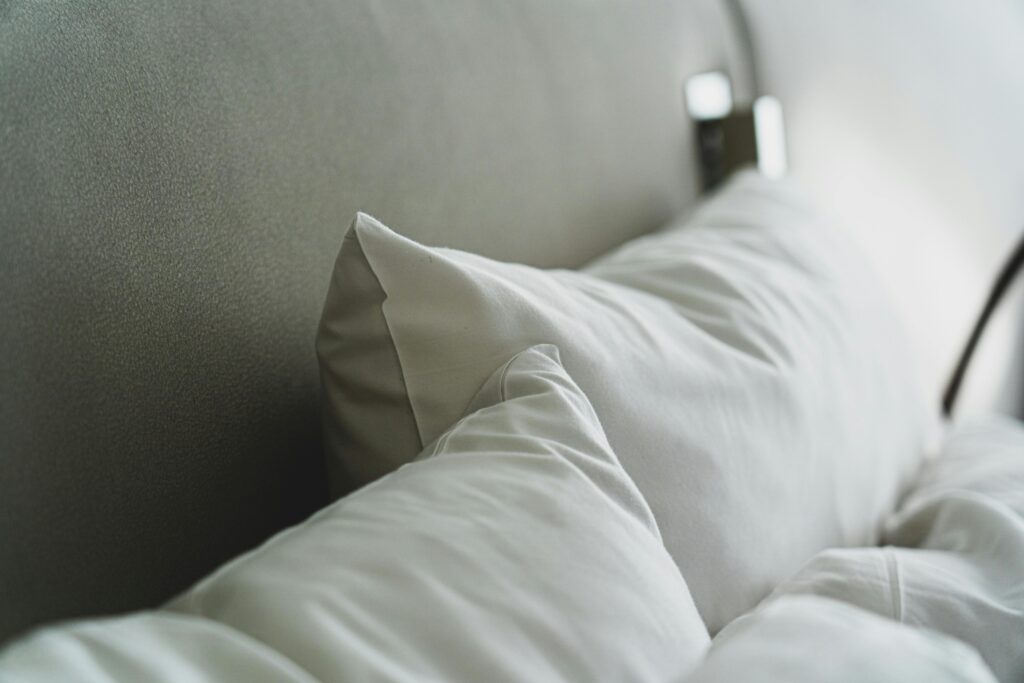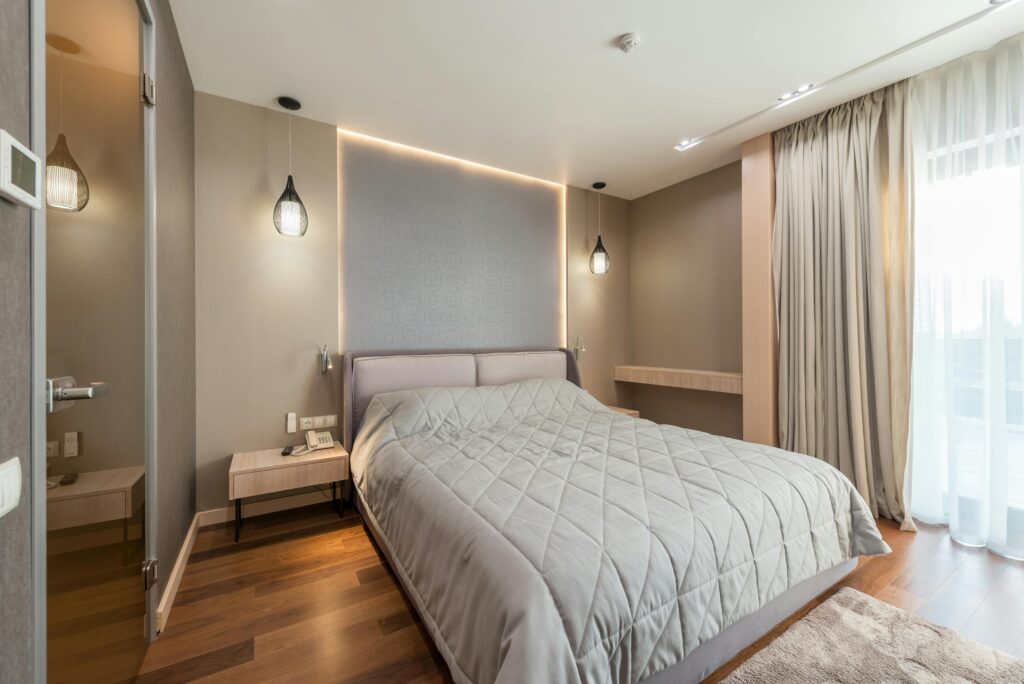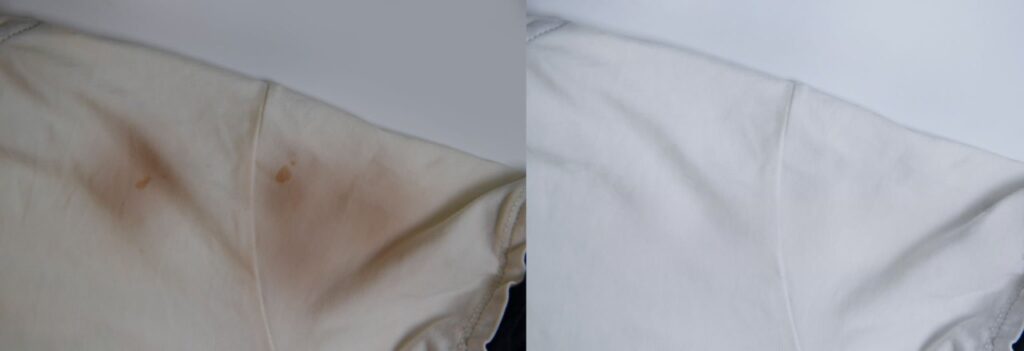
“Why do pillowcases turn yellow, As You know that feeling when you slide into bed with fresh, crisp white pillowcases? It’s like sleeping on a cloud. But then, after a few weeks, you flip your pillow and—ugh—those weird yellow stains are back. No matter how many times you wash them, they just won’t go away.
I used to think I was the only one dealing with this until I mentioned it to my friend Sarah.
“Oh my gosh, YES!” she said, rolling her eyes. “I thought it was just my husband’s gross pillow habits, but mine do it too!”
Turns out, yellow pillowcases are a universal laundry mystery. But after years of trial and error (and a few failed Pinterest hacks), I finally cracked the code.
The Nightly Crime Scene Happening on Your Pillow
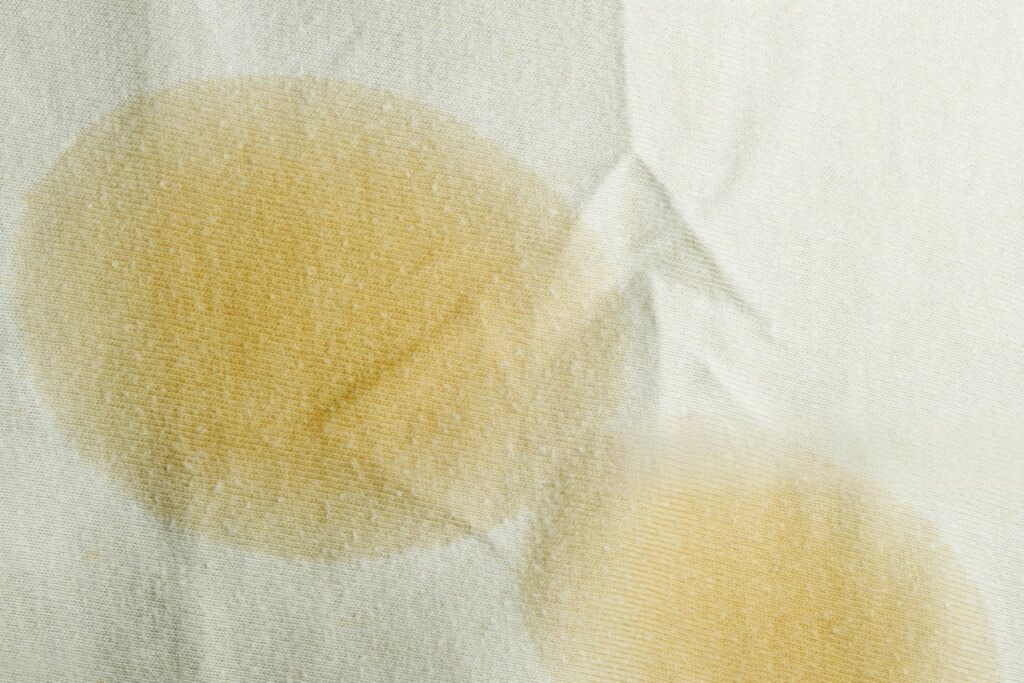
Let’s be real—our pillows see a lot. Drool, sweat, midnight snacks (no judgment), hair products, and even leftover makeup. It’s like a slow-motion stain party every night.
Here’s what’s really causing the yellow takeover:
1. Your Skin’s Secret Oily Betrayal
Even if you’re not a sweaty sleeper, your face and hair naturally produce oils. I learned this the hard way when I skipped washing my hair for a few days (hey, dry shampoo exists for a reason) and woke up to a greasy-looking pillowcase. Those oils don’t just vanish—they soak into the fabric and oxidize, turning yellow over time.
2. The Drool Factor
I’ll admit it—I’m a drooler. Not a puddle-on-the-pillow situation, but enough that my husband sometimes laughs at me. Saliva contains enzymes that break down fabric, and over time, that can lead to discoloration. So if you wake up with a damp cheek, that might be why your pillowcase looks like it’s been dipped in weak tea.
3. Skincare Products Gone Rogue
I love my nighttime skincare routine—serums, moisturizers, the works. But one day, I noticed my pillowcase was yellow only where my face touched it. Turns out, some ingredients (like benzoyl peroxide or retinol) can bleach or stain fabric. Who knew my acne cream was also a secret fabric dyer?
4. Hard Water’s Sneaky Residue
I moved to a new apartment last year and suddenly, everything started looking dingy. My whites weren’t white anymore—they were… beige? A plumber friend told me it was hard water. Minerals like calcium and magnesium cling to fabric, leaving behind a yellowish film. So even if your pillowcase is clean, it might look dirty.
5. The Inevitable Aging Process
Remember how white shoes turn yellow if you leave them in the closet too long? Same deal with pillowcases. Sunlight, air exposure, and repeated washing can break down fibers, making them lose their brightness.
How I Saved My Pillowcases (No Magic Required)
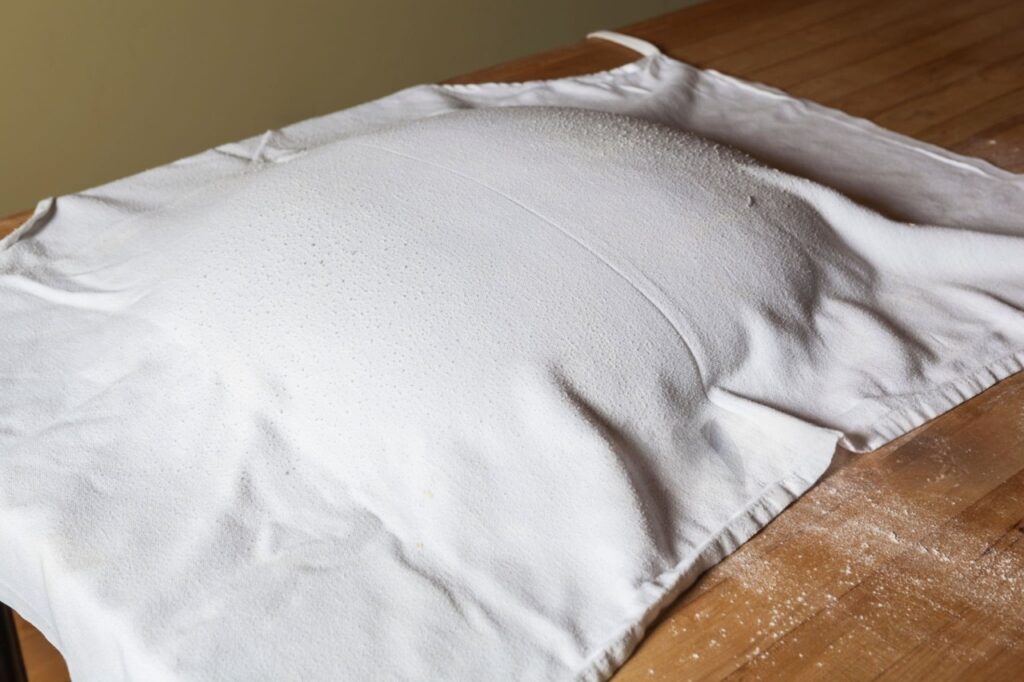
After tossing my fifth ruined pillowcase in six months, I reached my breaking point. I’d tried every “miracle” solution Pinterest could offer – from toothpaste scrubs to potato juice soaks (yes, that’s a real thing). Nothing worked. So I became a woman possessed, turning my laundry room into a textile laboratory. Here’s exactly what finally worked, ranked from “mildly helpful” to “holy grail status”:
The Game Changer: Enzyme Pre-Soak (My #1 Savior)
After watching a laundry industrialist’s TED Talk (yes, that exists), I learned about enzymatic cleaners. Here’s my battle-tested method:
- Fill my bathtub with the hottest water my hands can tolerate (about 120°F)
- Add 1/2 cup of Biokleen Bac-Out(the lime & mint scent is oddly refreshing)
- Submerge pillowcases and walk away for 8 hours (overnight works best)
- Next morning, I add 1 cup of OxiClean White Reviveand let it soak another 2 hours
- Wash normally with Persil ProClean(the enzymes in this detergent are next-level)
Why This Works: The enzymes literally digest the oil and protein stains at molecular level. My formerly yellowed cases came out looking like I’d bought them yesterday.
The Sunshine Boost (Best for Summer Months)
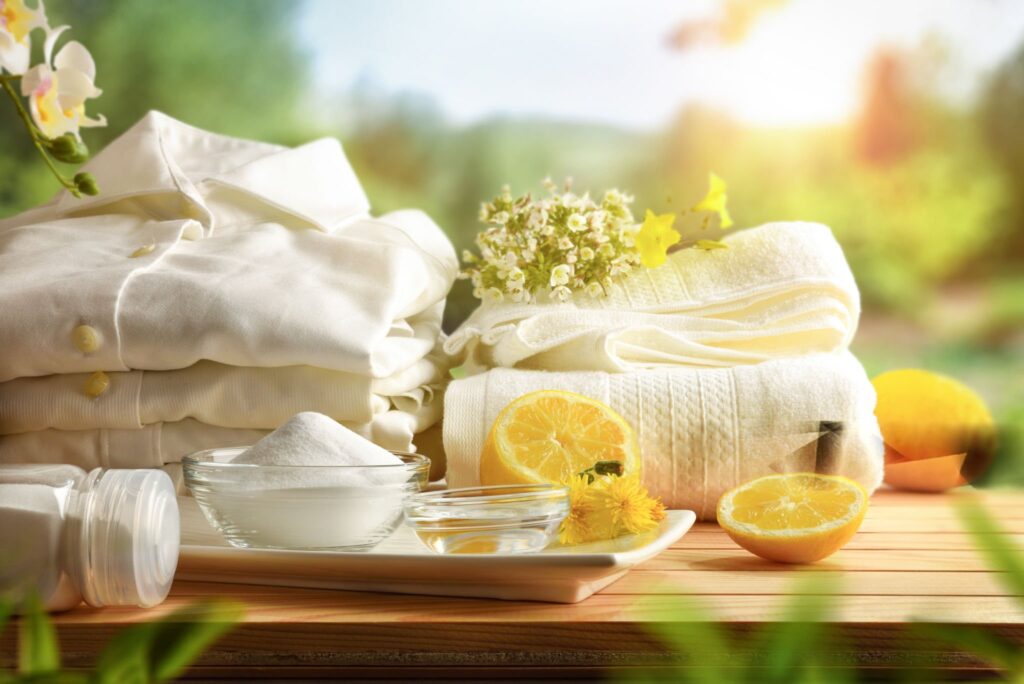
My grandmother’s old trick works shockingly well when combined with modern science:
- After the enzyme soak, I hang the damp pillowcases outside
- Spritz yellowed areas with 3% hydrogen peroxide(just enough to dampen)
- Let Florida sunshine work its magic for 4-6 hours
- The UV rays + peroxide create a natural bleaching effect without damage
Pro Tip: Rotate the pillowcases every hour for even exposure. I set a phone timer so I don’t forget.
The Heavy Artillery: For Set-In Stains
When I discovered yellow rings on my husband’s side of the bed (from his hair products), I developed this nuclear option:
- Make a paste with Blue Dawn, baking soda, and hydrogen peroxide(equal parts)
- Using a soft toothbrush, gently scrub the stained areas in circular motions
- Let sit for 30 minutes (no longer or it can weaken fibers)
- Wash in hottest safe water with 2 cups white vinegarin the rinse cycle
Cost Breakdown: This entire process costs about $0.25 per pillowcase – way cheaper than replacing them every few months.
Maintenance Mode (Keeping Them White)
Now that I’ve won the battle, here’s my prevention protocol:
- Every Sunday:Change pillowcases without fail (phone reminder set)
- Monthly:Soak all pillowcases in enzyme cleaner overnight
- Quarterly:Replace all pillowcases (I buy in bulk from Hotel Collection now)
- Skincare Adjustments:I wait 20 minutes after nighttime routine before bed, and use silk pillowcases on retinol nights
The Real Cost of Yellow Pillowcases
Before cracking this system, I was spending $127/year replacing stained linens. Now I spend about $12 annually on cleaning supplies. More importantly, I no longer feel that pang of embarrassment when changing sheets for guests.
Would you believe I actually enjoy laundry now? There’s something deeply satisfying about restoring what seemed ruined. Though my husband thinks I’ve gone completely mad – he caught me whispering “who’s my bright white beauty?” to a freshly cleaned pillowcase last week. No regrets.
The Great Pillowcase Rescue Mission: My Battle-Tested Stain Removal Secrets
I’ll never forget the day I pulled my favorite pillowcase out of the wash only to find those stubborn yellow stains still clinging to the fabric like they’d paid rent. That’s when I declared war. After months of experimentation (and a few hilarious failures), here’s exactly what worked – no magic potions, just simple science and a little elbow grease.
1. The Baking Soda & Vinegar Soak (My Holy Grail)
I was skeptical when my neighbor Margaret swore by this method. “It’s just pantry staples!” she claimed. But when I tried it? Mind. Blown.
Here's exactly how I do it:
- I run my bathtub faucet until the water is almost too hot to touch (about 120°F – hot enough to open fabric fibers but not damage them).
- As the tub fills, I sprinkle in 1 cup of baking soda (Arm & Hammer, the cheap stuff works fine). The water turns cloudy immediately.
- Then comes the fun part: I slowly pour in 1 cup of white vinegar (I use the store-brand gallon jug). The chemical reaction creates an insane fizzing show – my kids call it “Mom’s pillowcase volcano.”
- I submerge the pillowcases completely, using a wooden spoon to push out air bubbles. Pro tip: Fold them neatly so stains are fully exposed to the solution.
- Now the hard part: Walking away overnight. I cover the tub with a towel to retain heat and let the mixture work for at least 8 hours.
The Morning Revelation:
When I return, the water looks like weak tea (disgusting but satisfying). After a normal wash cycle, the results are shocking. The yellow stains that survived countless detergent washes? Gone. The fabric feels softer too – bonus!
Why It Works:
Baking soda (a mild alkali) and vinegar (a weak acid) create a chemical reaction that breaks down oils and lifts stains. It’s like giving your pillowcases a deep tissue massage at the molecular level.
2. Lemon Juice + Sunshine (Grandma's Secret Weapon)
When the baking soda soak didn’t completely erase some ancient set-in stains, I remembered how my Italian grandmother kept her linens blindingly white without fancy products.
My Sunny Solution:
- I juice 2 large lemons (about 1/2 cup juice) into a mixing bowl, straining out the seeds. The citrusy smell instantly perks me up.
- Add 2 cups of the hottest tap water – the heat helps activate the citric acid.
- I lay the pillowcase flat in my clean sink and pour the mixture directly onto the worst stains, gently rubbing the fabric together to work it in.
- After 30 minutes (perfect coffee break timing), I wring it out without rinsing – this is crucial!
- Then comes the magic: I hang it outside in direct sunlight, using wooden clothespins. The Florida sun does most of the work here – I flip it after 2 hours for even treatment.
The Transformation:
By afternoon, what were once yellowed patches are now indistinguishable from the rest of the fabric. The lemon juice acts as a natural bleaching agent, while UV rays break down stain molecules. Plus, they come in smelling like a summer picnic – way better than chemical odors.
Pro Tip: This works best on 100% cotton. For synthetic blends, reduce sun exposure to 3 hours max to prevent weakening fibers.
3. Hydrogen Peroxide Spot Treatment (For Emergency Stain Crises)
Picture this: It’s 10 PM, and I’m packing for an early trip when I discover my husband’s pillowcase looks like it lost a fight with a mustard bottle. Enter my emergency stain rescue protocol:
The 15-Minute Miracle:
- I grab my 3% hydrogen peroxide (the brown bottle from the first aid aisle) and mix it 1:1 with cold water in a spray bottle. Never use stronger concentrations – they can damage fabrics!
- Spray directly onto stains until damp but not soaked through. The immediate fizzing sound is deeply satisfying – you can hear it working.
- Set a timer for exactly 10 minutes (any longer risks fiber damage). Watch as the yellow literally fades before your eyes.
- Toss in the wash immediately with cold water and regular detergent.
Why This Saves Lives (Or At Least Linens):
Hydrogen peroxide is a gentle oxidizing agent that breaks down organic stains (sweat, oils) without chlorine’s harsh effects. It’s particularly effective on fresh stains – I’ve rescued pillowcases after midnight drool disasters with this method.
Bonus Trick: For extra stubborn stains, make a paste with hydrogen peroxide and baking soda, apply with an old toothbrush, then wash after 5 minutes.
The Aftermath: My Pillowcase Routine Today
These three methods have completely transformed my laundry life. Now I:
- Weekly: Alternate between baking soda soaks and lemon treatments
- Monthly: Do a hydrogen peroxide refresh on all pillowcases
- Seasonally: Replace oldest cases (because no solution lasts forever)
The best part? I’ve converted three neighbors to these methods after they saw my “after” results. There’s something deeply satisfying about beating those yellow stains without harsh chemicals – just good old-fashioned science and sunshine.
Now if you’ll excuse me, I need to go rescue a pillowcase my teenager just “broke in” with her new self-tanner… Wish me luck.
How to Keep Them White Longer (The Lazy Person’s Guide to Stain Prevention)
Let’s be real—no one wants to spend their weekends scrubbing yellow stains out of pillowcases. I sure don’t. After years of trial and error (and one particularly shameful incident where I flipped my pillowcase over mid-guest-visit to hide the stains), I’ve perfected a low-effort system to keep them bright without turning laundry into a part-time job.
1. The “Set It & Forget It” Washing Schedule
I used to wash my pillowcases… whenever I remembered. Which, unsurprisingly, led to yellow stains setting in like unwanted houseguests. Now?
- Every Sunday night, like clockwork, my phone buzzes with the reminder: “Pillowcases. Do it now.” (I use the Google Home app to automate this because my brain is full of grocery lists and random song lyrics.)
- Why weekly? Skin oils, sweat, and drool start oxidizing after about 7 days, making stains harder to remove. Waiting longer is like letting dirty dishes crust over—way more work later.
- Pro Tip: Keep a small laundry basket just for pillowcases near your bed. When you strip the bed, toss them straight in—no hunting through sheets later.
2. The Goldilocks Water Temperature Rule
I used to blast everything with hot water, thinking “Heat kills germs, so it must be best!” Turns out, that’s only half true.
- For cotton/polyester blends: Warm water (90–110°F) is the sweet spot. Hot enough to dissolve oils, but not so hot it sets protein stains (like sweat).
- For delicate fabrics (silk, bamboo): Cold water only. Hot water can damage fibers and make them more prone to staining.
- Exception: If someone’s been sick (or, ahem, drooled excessively), I’ll use hot water (120°F) with oxy bleach to nuke bacteria.
Test It: Run your sink as hot as your hands can tolerate—that’s usually the perfect temp for stains.
3. The Fabric Softener Lie (And What to Use Instead)
I was devoted to fabric softener until I noticed my towels stopped absorbing water and my pillowcases got dingy faster. A laundry technician finally clued me in:
- Softeners coat fibers in silicone, which traps oils and stains over time. That “fresh scent”? Just masking the grime.
- Swap for white vinegar: ½ cup in the rinse cycle neutralizes odors, breaks down residue, AND softens fabric. No, your clothes won’t smell like salad dressing—the vinegar odor rinses out completely.
- Bonus: Add 1/4 cup baking soda to the wash cycle for extra deodorizing power.
4. The Rotation Trick (Because Pillowcases Need a Break Too)
I used to have one “favorite” pillowcase I’d wash and reuse constantly. Big mistake.
- Now I rotate between 3 identical sets (I buy Martha Stewart’s Hotel Collection in bulk when they’re on sale).
- Why it works:
- Gives fibers time to “recover” between uses (like resting muscles after a workout).
- Prevents repetitive friction in the same spots (which weakens fabric and makes stains set faster).
- Pro Move: Label them A, B, and C with a small stitch mark to track rotation.
5. The “Oops, I Forgot” Emergency Save
For those weeks when life gets chaotic (read: every third week), here’s my 5-minute salvage routine:
- Spritz stains with a 1:1 water/hydrogen peroxide mix.
- Roll pillowcase up and toss it in the freezer (yes, really!). The cold prevents stains from setting until laundry day.
- Wash as usual—no extra scrubbing needed.
Final Confession: How Yellow Stains Turned Me Into a Pillowcase Tyrant
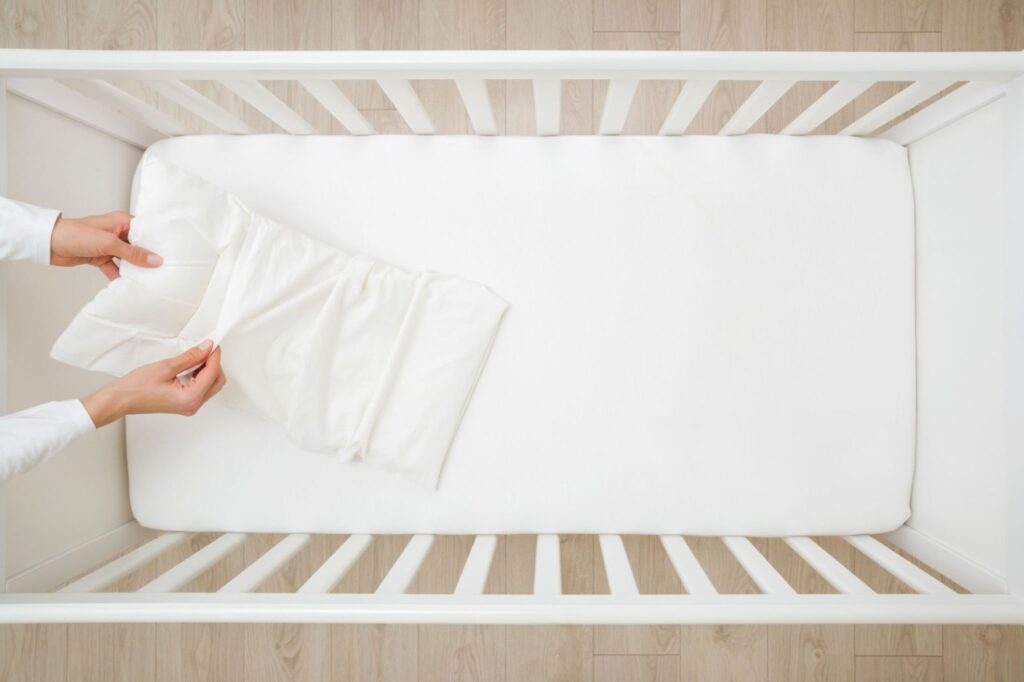
I’ll admit it – I’ve become that person. The one who side-eyes guests’ pillowcases when they stay over. The woman who brings her own linen to hotels “just in case.” After winning my war against yellow stains, I developed what my husband calls “textile trust issues.”
Now when I slide between fresh white sheets, I actually pat my pillow like it’s a well-trained pet. “Who’s my bright, stain-free beauty?” I whisper. My kids think I’ve lost it. My neighbor Sarah just rolls her eyes when I launch into unsolicited laundry advice at book club.
But last week? She texted me at midnight: “Okay fine. How DO you get rid of yellow stains?” I replied with a 12-step PDF and three product links. No regrets.
Some might call it obsession. I call it hard-won domestic victory. Now if you’ll excuse me, I need to go fluff my perfectly white pillows… again.
Your turn: Admit it – what household chore have you gone overboard perfecting? Dishwasher loading? Towel folding? Spill your secrets below!**
FAQs
1. Why do ONLY my pillowcases turn yellow (not sheets)?
Pillowcases absorb concentrated face oils, hair products, and saliva—especially where your cheek and hairline press all night. Sheets spread out contact, while pillowcases take the brunt.
2. Can I use bleach on yellowed pillowcases?
Proceed with caution! Chlorine bleach can weaken fibers and turn some yellow stains orange. Try oxygen bleach (OxiClean) first—it’s gentler and works on organic stains.
3. How often should I wash pillowcases to prevent staining?
Weekly is ideal, but oily skin or acne treatments? Every 3-4 days. Pro tip: Buy 4-5 identical sets to rotate (I steal extras from hotel stays—shhh).

